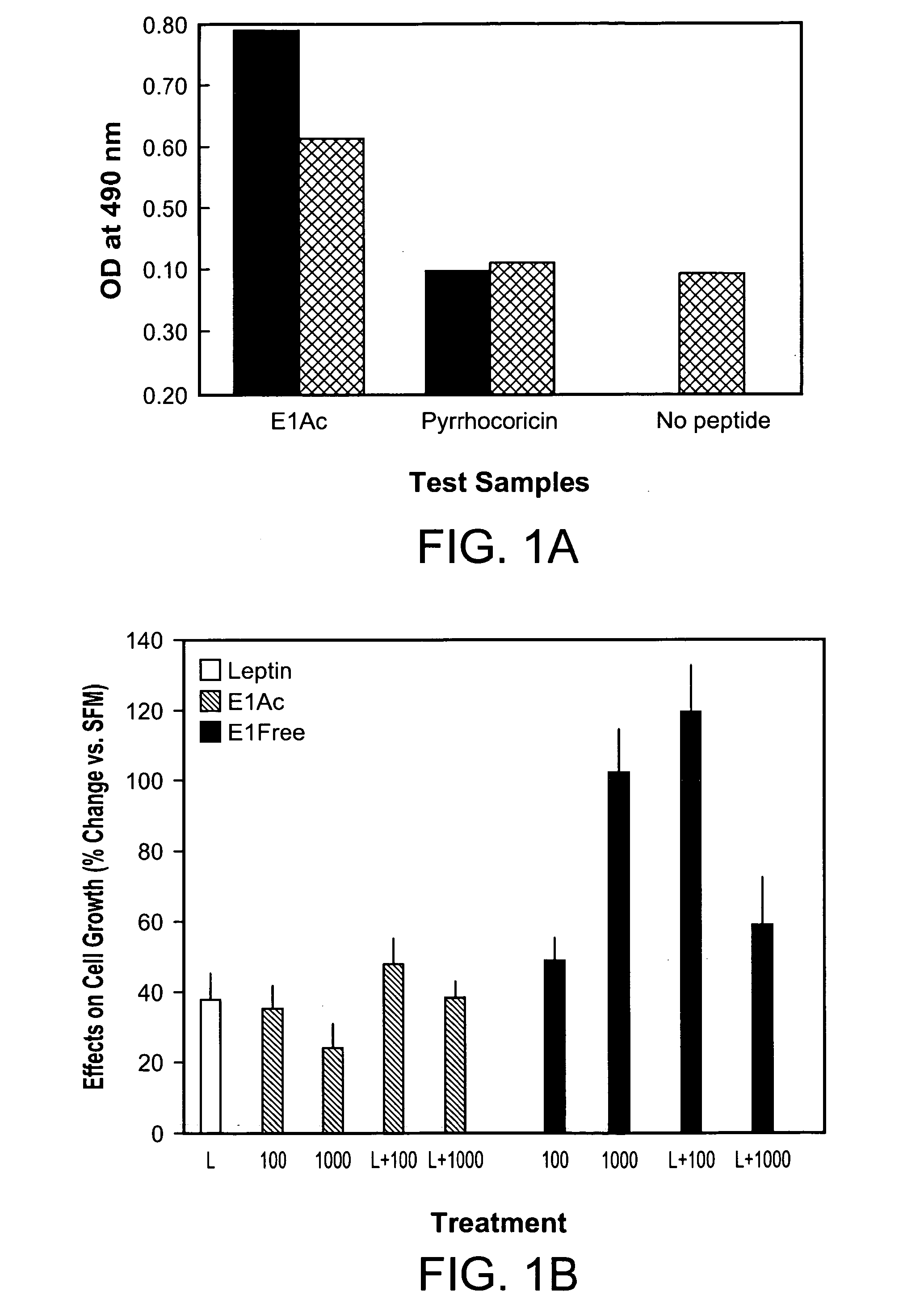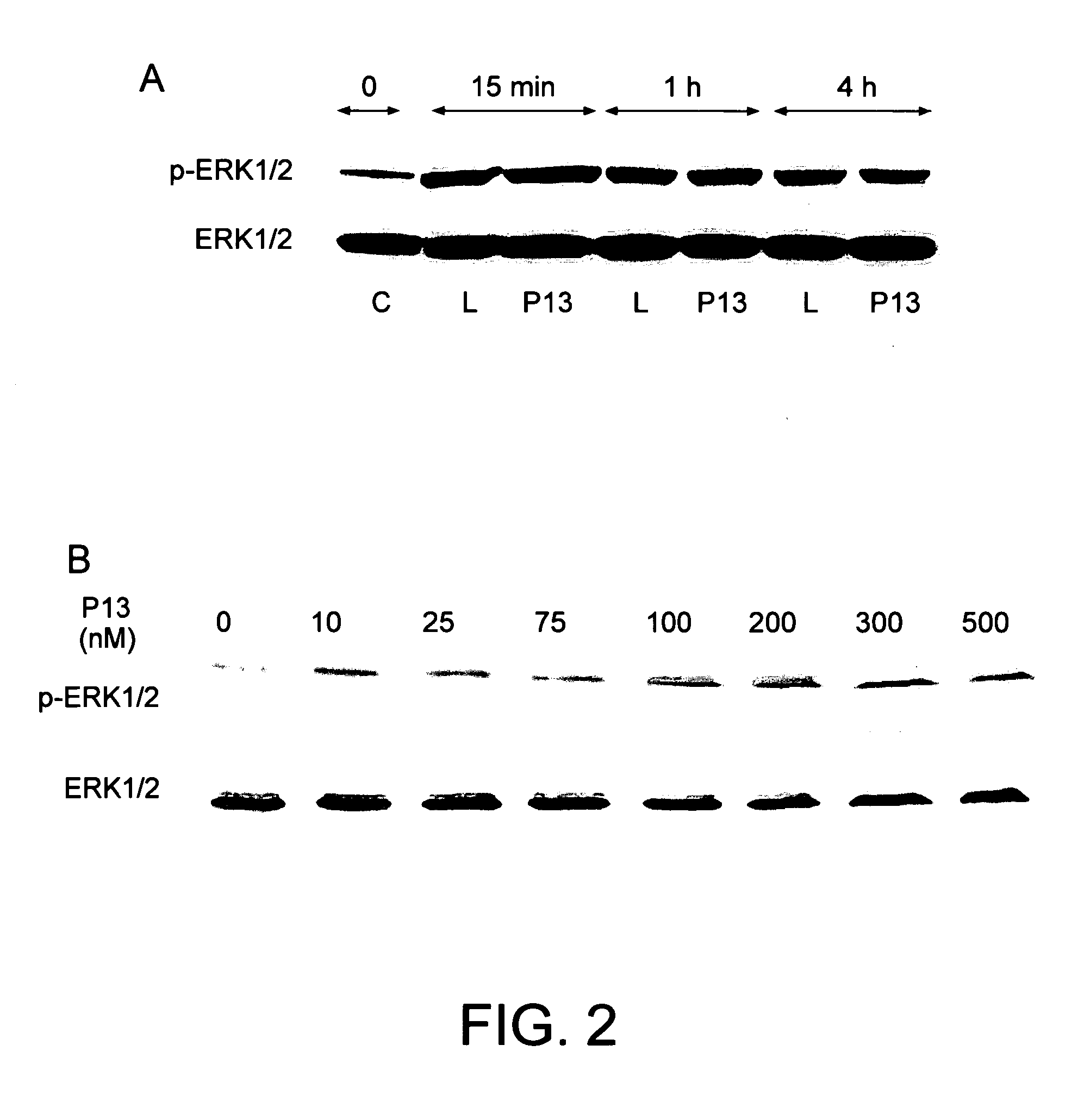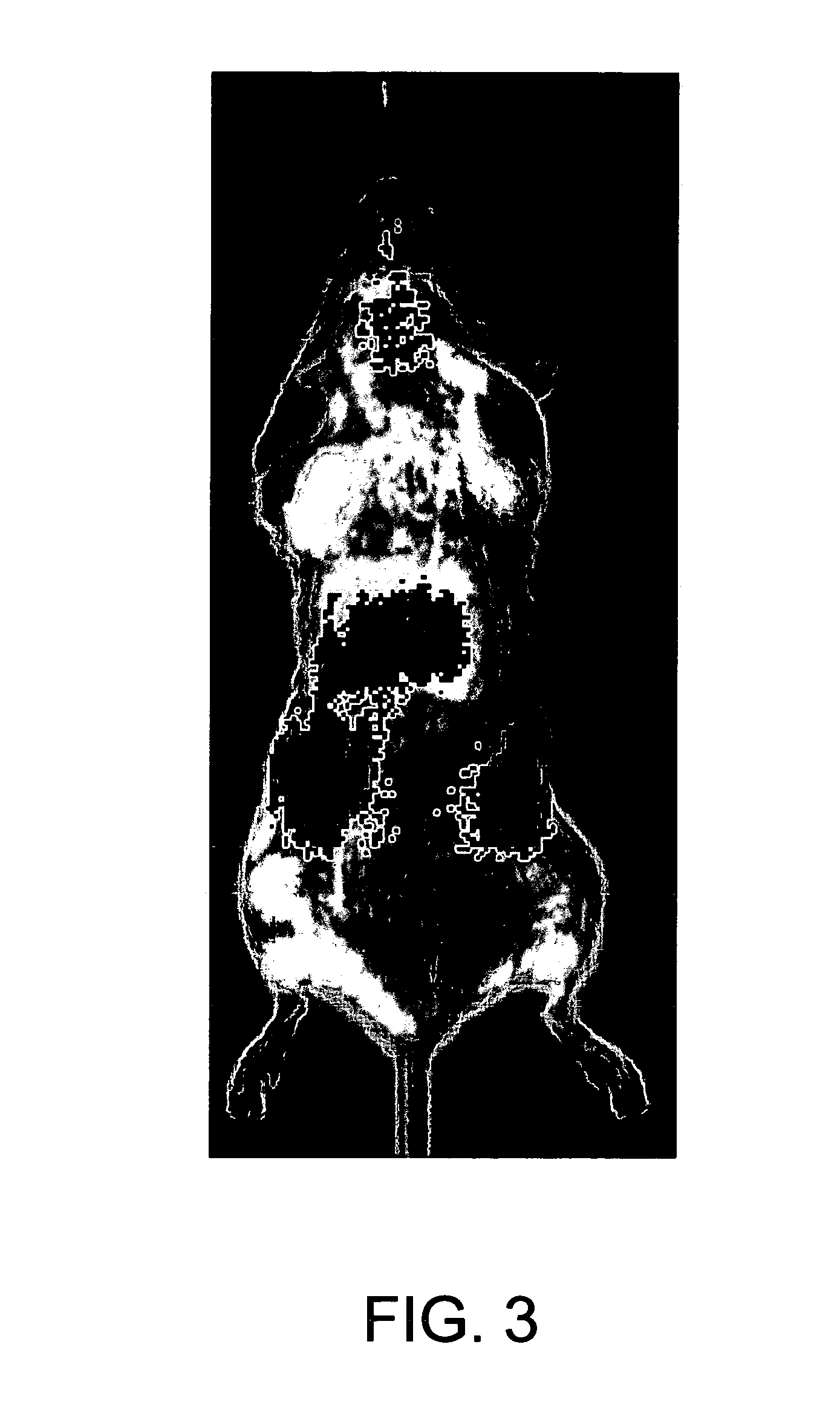Leptin agonist and methods of use
a technology of leptin and peptides, which is applied in the direction of peptide/protein ingredients, metabolic disorders, and obesity gene products, etc., can solve the problems of difficult to obtain true leptin agonists or antagonists, and the use of such proteins and peptides in human or veterinary therapy will likely meet regulatory opposition
- Summary
- Abstract
- Description
- Claims
- Application Information
AI Technical Summary
Benefits of technology
Problems solved by technology
Method used
Image
Examples
experimental example 1
Designer Site III Derivatives
[0256]Based on the results above, it appears that site III is the leptin region that can be further modified for obtaining peptide agonists. In designing peptide agonists, peptides of 12-13 residues were prepared, with hydrophobic residues placed at or near the peptide termini (to render the peptides more resistant to serum proteases). In two instances, full C-terminal blockade was attempted with acetylated diamino-propionic acid, a residue proven to increase peptide stability at the C-terminus without interfering in vivo or in vitro biological activities (L. Otvos, Jr., et al., Protein Sci., 2000, 9, 742-749). Various specific amino acid residues were also replaced with unnatural analogs also to increase stability as well as to introduce full antagonistic or agonistic mutations. The modified residues included those that were shown to regulate peptide biological activity, such as Tyr119 and Ser120, as well as Glu122 and Ala125, two residues located at th...
experimental example 2
In Vitro Model of Blood-Brain-Barrier Penetration
[0266]To confirm the ability of the E1 peptides to cross the blood-brain barrier, penetration of the protected (E1Ac) and free (E1Free) glycopeptides across confluent layers of astrocytes, brain endothelial cells, or a double layer of these two cell types was examined, in comparison with the Site III Ala,Ala non-glycosylated analog. This cell model was shown to mimic the transport properties of drugs across the blood-brain barrier accurately (S. Lundquist, et al., Pharm. Res., 2002, 19, 976-981).
[0267]A confluent monolayer of human astrocytes or brain capillary endothelial cells, or a dual layer of both cell types (astrocytes first, followed by endothelial cells) were grown at 37° C. on polycarbonate filters (Costar, Transwell, 0.4 μm) that were pretreated with collagen. Under these conditions, the endothelial cells retain the characteristics of the blood-brain-barrier, which include complex tight junctions, low rates of pinocytosis a...
experimental example 3
In Vivo Biodistribution of E1Free Peptide
[0269]E1Free peptide was co-synthesized with the near-infrared absorbing fluorescent dye DY675 and the resultant labeled peptide was purified by RP-HPLC. Forty microgams of the peptide was injected intraperiotoneally into shaved and isoflurane anesthesized female Balb / c mice. For imaging of the biodistribution of the peptide, the animals were placed into a fluorescence microscope chamber under continuous isoflurane exposure. Fluorescence exposure pictures were taken with an IVIS microscope set to a 695 nm emission wavelength. Images were obtained once a minute for the first ten minutes after peptide addition and every five minutes afterwards, until a 65 minute stop point was reached.
[0270]FIG. 3 illustrates the biodistribution of the E1Free peptide, and shows that the peptide localizes in the head, as well as the kidneys and liver. This result suggests that peptide crosses the blood-brain barrier, and can therefore successfully reach the brai...
PUM
| Property | Measurement | Unit |
|---|---|---|
| energy balance | aaaaa | aaaaa |
| resistance | aaaaa | aaaaa |
| affinity | aaaaa | aaaaa |
Abstract
Description
Claims
Application Information
 Login to View More
Login to View More - R&D
- Intellectual Property
- Life Sciences
- Materials
- Tech Scout
- Unparalleled Data Quality
- Higher Quality Content
- 60% Fewer Hallucinations
Browse by: Latest US Patents, China's latest patents, Technical Efficacy Thesaurus, Application Domain, Technology Topic, Popular Technical Reports.
© 2025 PatSnap. All rights reserved.Legal|Privacy policy|Modern Slavery Act Transparency Statement|Sitemap|About US| Contact US: help@patsnap.com



